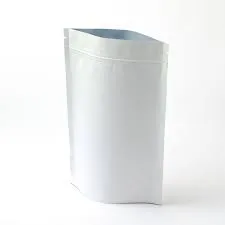mil thickness to mm
Understanding MIL Thickness and Its Conversion to Millimeters
In various industries, especially in manufacturing and construction, the term mil is frequently used to specify thickness. A mil is a unit of measurement that equals one-thousandth of an inch (0.001 inches or 0.0254 millimeters). Understanding this measurement is crucial for professionals who deal with materials, whether it’s plastic film, coatings, or textiles. This article will explore mil thickness, its applications, and how to accurately convert mils to millimeters.
What Is MIL Thickness?
MIL thickness is often used in manufacturing contexts to describe the thickness of materials. It is particularly common in the field of plastics, where polyethylenes and other films are sold in specific mil thicknesses. For example, when assessing the strength and durability of plastic sheeting or wraps, knowing the mil thickness helps determine the product's suitability for various applications.
Common MIL thickness values for plastic sheeting include
- 2 mils (0.002 inches or 0.0508 mm) — often used for lightweight shrink wraps or protective covers - 4 mils (0.004 inches or 0.1016 mm) — typically used for moderate protective sheeting - 6 mils (0.006 inches or 0.1524 mm) — a sturdy option suitable for heavy-duty applications - 10 mils (0.010 inches or 0.254 mm) — often utilized in industrial settings for robust protective needs
Understanding these figures helps users select the appropriate thickness for their specific requirements.
The Importance of Accurate Measurement
Precision in measuring thickness is essential across numerous applications. For instance, in the construction industry, the gauging of material thickness can significantly impact structural integrity and durability. Similarly, in packaging, the mil thickness can affect product shelf life and so pre-measurement ensures that the materials can withstand the intended environmental conditions.
Converting MIL to Millimeters
mil thickness to mm

Converting mils to millimeters is straightforward using a simple formula. Since one mil equals 0.0254 millimeters, the conversion can be calculated as follows
\[ \text{millimeter value} = \text{mil value} \times 0.0254 \]
For example, if you have a material that is 6 mils thick, the conversion to millimeters would be
\[ 6 \text{ mils} \times 0.0254 = 0.1524 \text{ mm} \]
This practical calculation allows professionals to easily switch between mils and millimeters, accommodating different standards in measurement.
Real-World Applications
Different industries employ MIL thickness measurements for a variety of reasons. In the medical field, for example, sterile packaging often specifies thickness in mils to ensure the integrity of the product. The automotive and aerospace industries also use mil measurements when discussing protective coatings and finishes, where the thickness can impact performance and aesthetics.
Conclusion
Understanding mil thickness and its conversion to millimeters is crucial for anyone involved in material selection, especially in manufacturing, construction, and packaging sectors. Knowing the precise thickness of materials can mean the difference between success and failure in projects, impacting everything from structural integrity to product lifespan. By employing the simple formula for conversion and being aware of the commonly used thickness values, professionals can effectively communicate specifications and requirements, ensuring optimal outcomes in their respective fields. Whether you're protecting a product, ensuring compatibility, or enhancing performance, grasping the significance of mil thickness is both beneficial and necessary.













